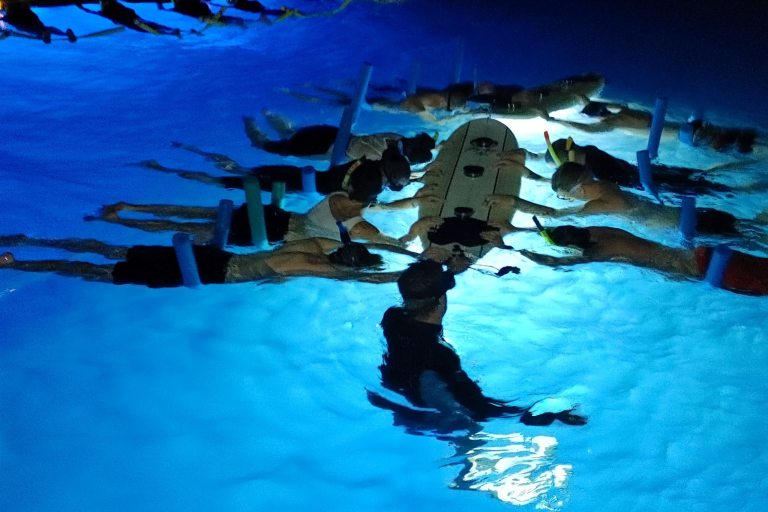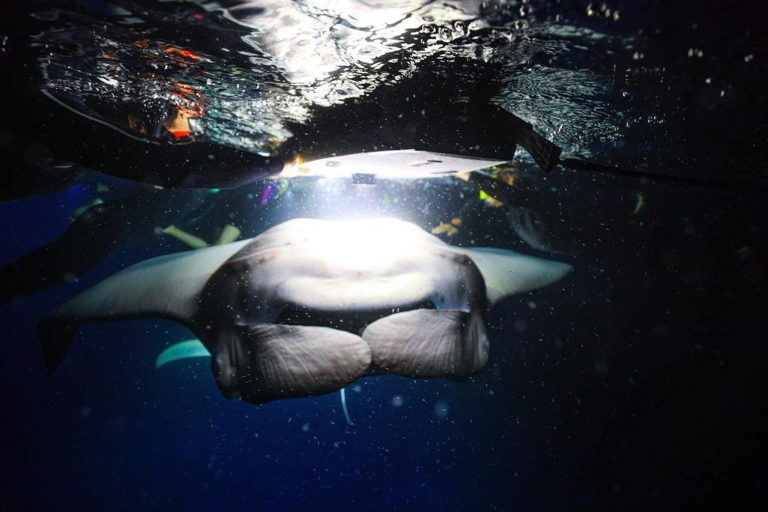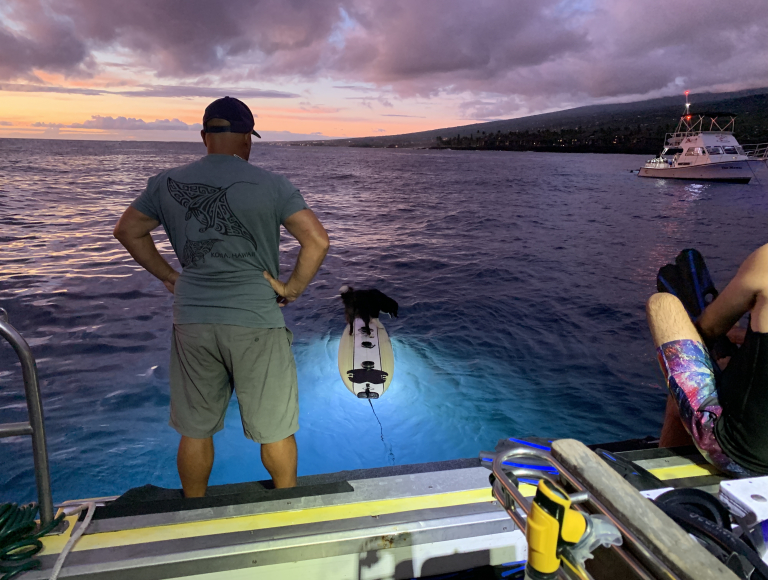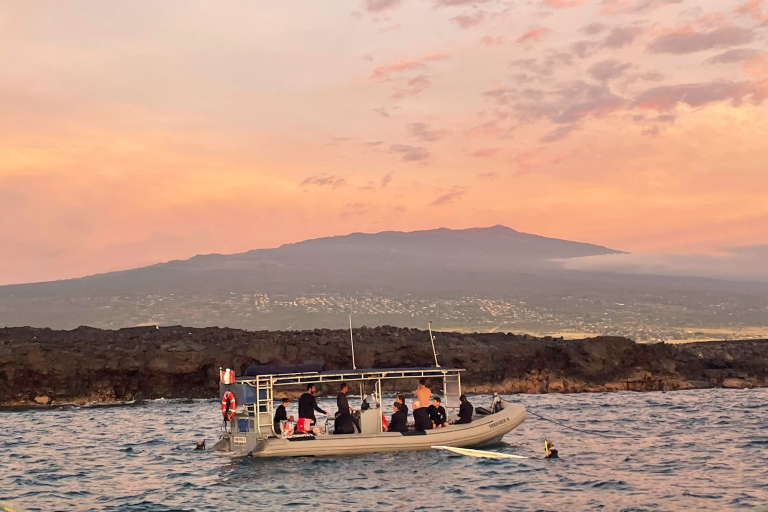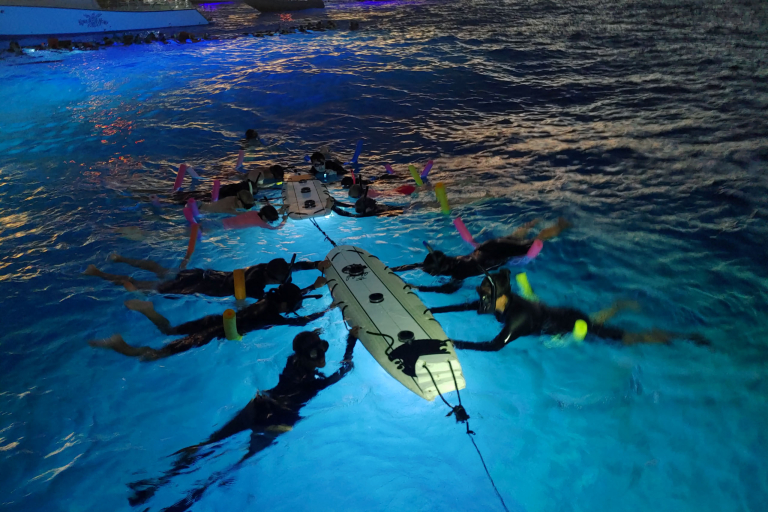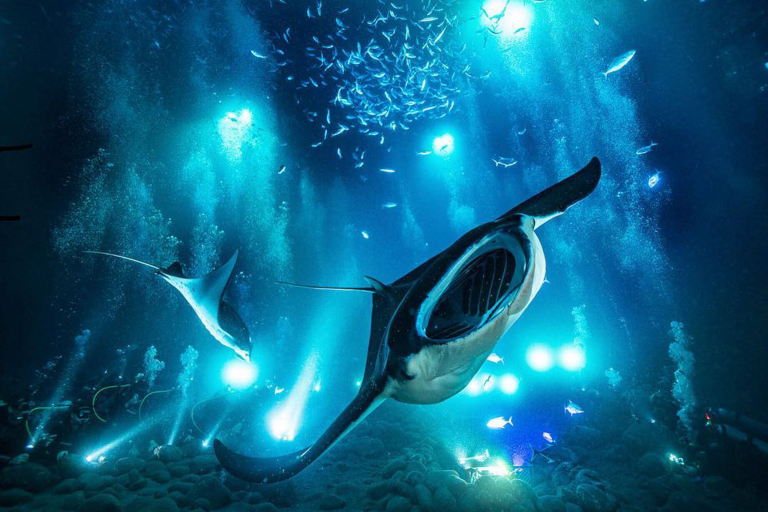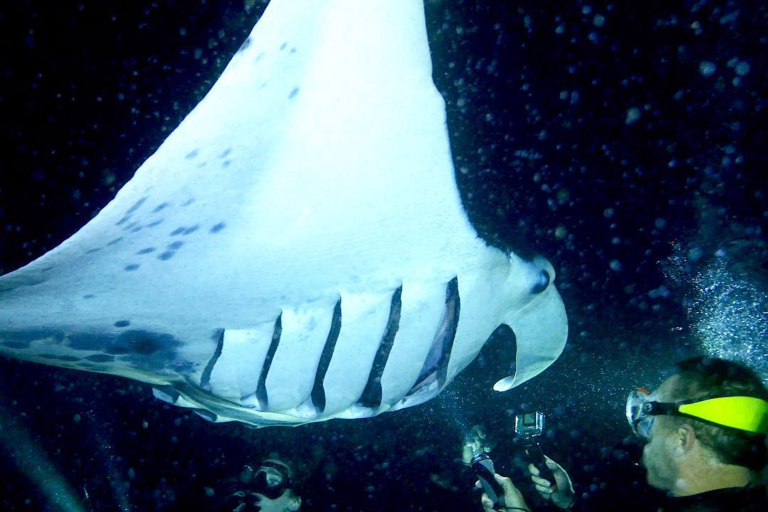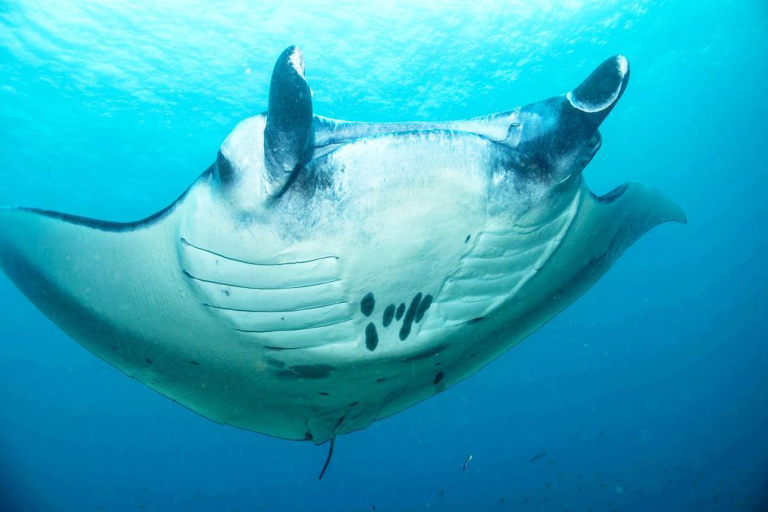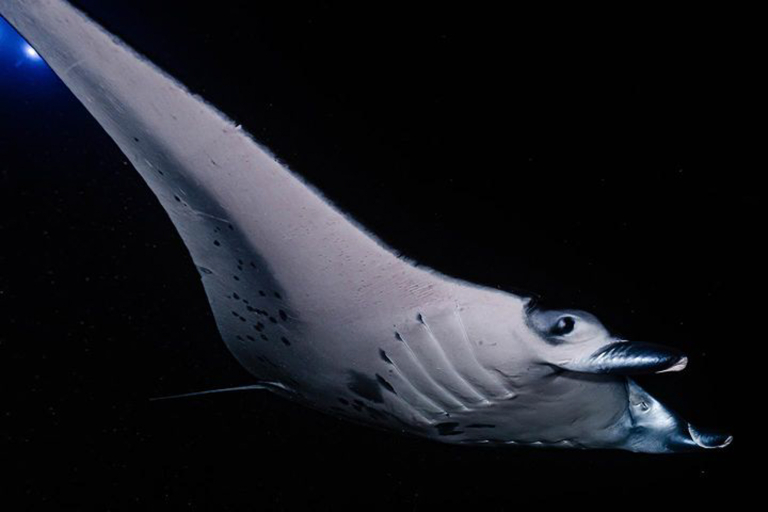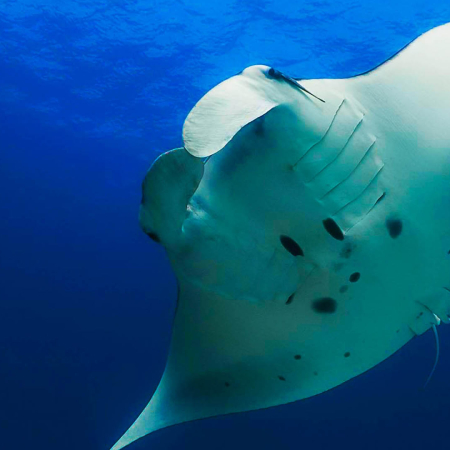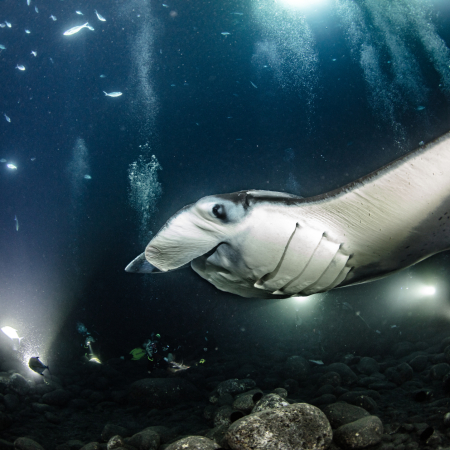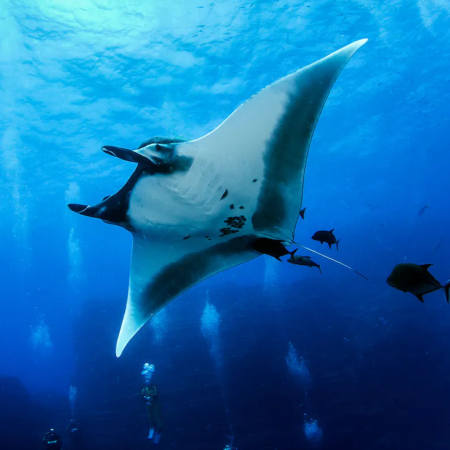DIVE WITH MANTA RAYS IN KONA
Join us for an evening of entertainment with a Manta Ray dive. On the dive you descend into darkness and in the beam of your light watch the nightlife come alive. Observe in awe as Manta Rays glide in from the darkness to feed on the microscopic plankton attracted to your light.
You may also follow a hunting moray as it searches for its next meal. Watch as he attacks an unsuspecting tang, twists his body in a knot and swallows the fish. Visit shy shrimp, crabs, delicate nudibranchs and sleeping fish. It’s a wonderful way to spend the evening and enjoy Kona’s nightlife at its best!
-
2-hour
-
Kailua-Kona, Big Island, Hawaii
Kona Manta Ray Dive Features
Manta Guarantee
While we see mantas about 85% of the time, they are wild animals and their appearance is beyond our control. If you don’t see a manta on your night out, you can go again on another night on a space available, standby basis. Keep in mind that these spaces may be very limited, especially during the busiest times of the year. However, the offer never expires but is non-transferrable and has no refund or cash value.
Fantastic Tour For Your Whole Group
Experience the ultimate Manta adventure that caters to everyone in your group - divers, snorkelers, and even younger children! Not only will you have the chance to witness the incredibly beautiful Hawaiian sunset from our boat, but you'll also get up close and personal with these magnificent creatures. Our boat ride to the site is a quick 20-30 minutes, and once we're there, we'll provide a detailed briefing about these incredible animals as we soak in the breathtaking views of the sunset. Then, it's time to dive into the water and spend a thrilling 45 minutes with the Mantas. Don't miss out on this unforgettable experience.
Meet These Gentle Giants
Discover the world of Kona's local Mantas! Did you know that these incredible creatures can grow up to a whopping 15 ft. in wingspan and weigh over 1000 lbs.? With their unique and striking features, including their horn-shaped fins known as "cephalic fins," mantas are often referred to as "devil rays" or "devilfish."
Despite their intimidating appearance, mantas are actually gentle giants. Contrary to popular belief, they pose no threat to humans as they exclusively feed on tiny organisms such as plankton. No need to fear any hidden barbs or stingers here!
However, it's important to remember to admire these magnificent creatures from a distance. Touching them can potentially harm them by removing their protective mucus coating. Let's appreciate and preserve the beauty of mantas without causing them any harm.
Night Dive Manta Ray Tour Features
Highlights
-
Dive With Manta Rays Off Kona Coast
-
Rated Best Dive In Hawaiian Islands
-
Easy and Safe Ocean Access For All Levels
-
Scuba Dive & Snorkeling Options
-
Available Seven Nights A Week
-
Beautiful 3 Hour Tour Starting Just Before Sunset
Description
Experience the ultimate highlight of your vacation by diving with the majestic Manta Rays of Kona. This renowned dive, known as one of the top ten in the world, offers a surreal and unforgettable adventure. Dive or snorkel in the tranquil waters of a protected bay, surrounded by dive boats and a sandy area just 30 feet deep.
As you gather with fellow divers on the ocean floor, snorkelers float above, creating the perfect setting for an awe-inspiring encounter. Our lights attract the plankton, which in turn attracts the Mantas - these graceful creatures, with their wingspans of up to 15 feet and weighing over 1000 lbs, glide effortlessly between divers and snorkelers, performing continuous acrobatic flips as they feast on mouthfuls of plankton at their nightly buffet.
Don't miss the chance to witness this breathtaking spectacle that will leave you with cherished memories of your Hawaiian getaway.
Price & Availability
Manta Ray Night Dive or Snorkel From Honokohau Marina
| Certified Divers | $159.00 |
| Snorkeler | $129.00 |
Operate daily
Itinerary
- 5:30 pm - Check-in
- 6:00 pm - Get in the ocean, along the Kona coastline just after sunset.
- 7:00 pm - Drawn by lights, witness Manta Ray feeding on plankton right in front of you
- 8:00 pm - Return to the shore after enjoying the show.
Instructions
| OBSERVE ONLY | No touching. Resist the urge to “pet” the mantas. This will rub off their protective mucus coating. Do not chase, grab, or try to take a ride on the mantas. This doesn’t benefit the animal in anyway. |
| DIVER POSITION | Divers must stay on or near the sand, rubble or boulder bottom. An open water column is necessary for the mantas to maneuver. Avoid contact with coral, sea urchins, or other marine life. Form a semi-circle with your group. |
| SNORKELER POSITION | Snorkelers must stay on the surface and keep legs horizontal. Do not dive down into the water column. |
| LIGHTS | Divers please shine lights up into the water column to attract plankton. Snorkelers please shine lights down. |
| BUBBLES | Divers try to time your breathing so that you don’t blow bubbles up into the manta if it’s passes over your head. |
| TAKING PHOTOS or VIDEO | When taking underwater photos or video, be considerate of people and mantas. Minimize your equipment in the water column and let the mantas come to you.These guidelines were first established in 1993 by manta dive operators in Kona, Hawaii. Reviewed again in 2013 by manta tour operators (dive and snorkel operators). |
Cancellation
- We have a 72-hour cancellation policy.
- Changes or cancellations made with less than 72 hours will result in a full
charge cancellation fee with no exception.
High Season (Christmas) Cancellation Policy
- We have a 72-hours cancellation policy.
- Changes or cancellations made with less than 72 hours will result in a full charge cancellation fee – no exceptions!
More Big Island Manta Ray Tours
Frequently Asked Questions

